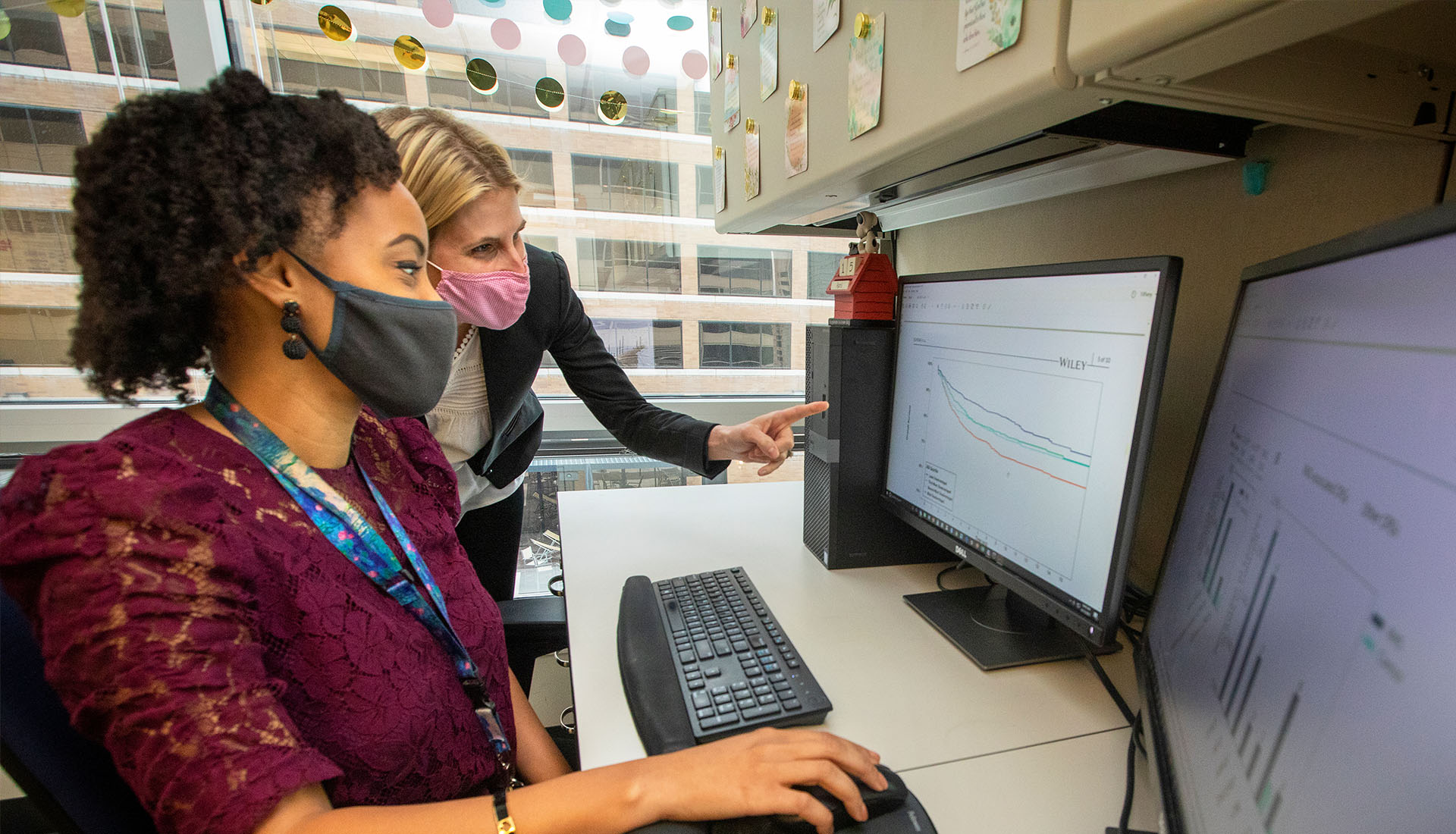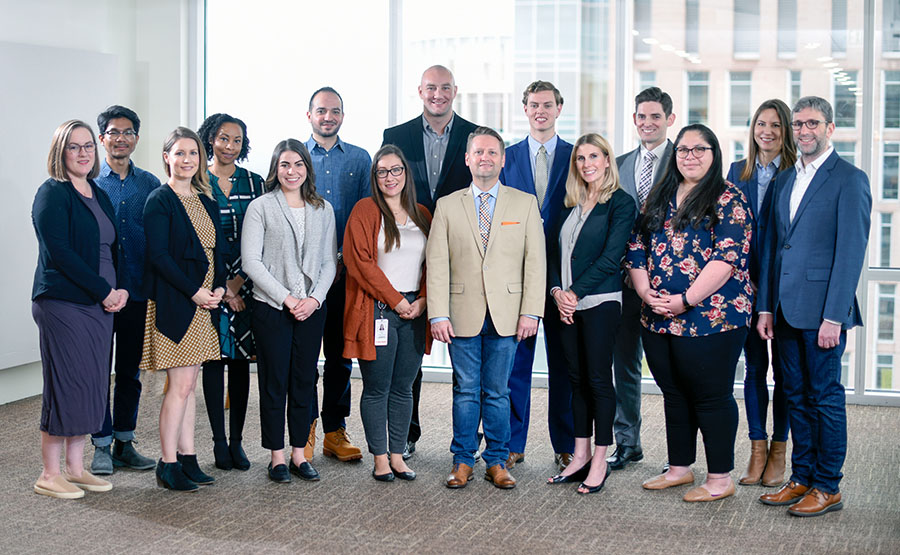

There is good news in the ongoing struggle against pediatric cancer:
And yet, a mystery puzzles the medical community: Why has there been a continuous rise in pediatric cancer diagnoses over the last four decades?
According to the National Cancer Institute’s Surveillance, Epidemiology and End Results (SEER) program, pediatric cancer cases have increased by 60 percent in children between the ages of 0 and 14-years-old from 1975 to 2017. Although pediatric cancers are still uncommon, this is an alarming trend.
After all, for those parents whose child is affected, the rarity of pediatric cancer offers little solace. A diagnosis is devastating news for any family.
On average, about 15,000 to 17,000 children are diagnosed with cancer in the U.S. annually. Globally, about 250,000 children are diagnosed. Texas Children’s Cancer Center® usually treats between 500 and 600 new cancer patients each year. Those are smaller numbers relative to adult patients – but those are still hundreds to thousands of families and children whose lives are upended and sometimes forever altered.
For many patients, successfully defeating cancer is only the first hurdle. Many adult survivors carry a higher risk of developing chronic health conditions or secondary cancers related to their original cancer diagnosis or treatment. As a result, they often require long-term medical surveillance to detect potential health problems.
Understanding why children develop cancers and why it’s now happening more often inspires the research of Philip Lupo, PhD, MPH, director of the Childhood Cancer Epidemiology and Prevention Program at Texas Children’s Cancer Center, and Michael Scheurer, PhD, MPH, co-leader of the Cancer Prevention and Population Sciences Program at the Dan L. Duncan Cancer Center at Baylor College of Medicine.
“Compared to the knowledge of risk factors for cancer in adults, there’s a deficit in our understanding of risk factors for the pediatric population. Most funding for cancer research is allocated toward studying cancer in adults,” said Dr. Lupo, associate professor of pediatrics-hematology and oncology at Baylor. “Right now, there’s not any single exposure we can point to as most likely to cause a childhood cancer. It’s not like smoking and lung cancer, or HPV and cervical cancer in adults.
“Such an increase in pediatric cancers within a few decades can’t be fully explained by genetics alone. The best consensus we have is that there are other causes, likely a combination of genetic susceptibility and environmental factors. We just have to pinpoint what those unknown specific factors are,” Dr. Lupo said.
Dr. Lupo and Dr. Scheurer each lead a landmark study to unravel the mystery surrounding the increase in pediatric cancer.
“Discovering these risk factors can lead to earlier detection and better outcomes – and even the complete prevention of a single cancer or group of cancers from ever occurring,” added Dr. Scheurer, professor of pediatrics-hematology and oncology at Baylor.
 Research teams seeking causes of childhood cancer include these led by Michael Scheurer, PhD, MPH, (front row center) and Philip Lupo, PhD, MPH, (front row right).
Research teams seeking causes of childhood cancer include these led by Michael Scheurer, PhD, MPH, (front row center) and Philip Lupo, PhD, MPH, (front row right).
Dr. Scheurer had been working on a local – and, with the aid of a grant, eventually statewide – study to gather data from childhood cancer patients to identify environmental and genetic causes. Representatives from The Oliver Foundation, based in Florida, learned about his research and made an introduction through one of Dr. Scheurer’s colleagues at Baylor.
For Simon Strong, the organization’s founder, this topic is personal. In 2015, his 12-year-old son, Oliver, died mere hours after a diagnosis of acute myeloid leukemia. Since then, Mr. Strong’s mission has been to examine potential causes of childhood cancer – particularly, environmental toxins – in hopes of achieving prevention.
The partnership between Dr. Scheurer’s team at Baylor and The Oliver Foundation kicked off in June 2020 with a new name (“The Reasons Why Us”) and an expanded global reach.
The study consists of two parts:
When available, Dr. Scheurer’s team also collects baby teeth from the pediatric cancer patients. In collaboration with investigators at the Icahn School of Medicine at Mount Sinai in New York, the team studies the teeth to more objectively assess environmental exposures and counterbalance the reliance on parental recall or potential bias in the questionnaire data.
Any family with at least one child who has had cancer – living or deceased – qualifies for the study. Because it’s web based, families around the world can participate. This broad range of participants will enhance the findings.
“Previous studies of this type focused on local or regional populations. Expanding the study on this scale will enable us to better understand commonalities and differences between childhood cancers, and better assess geography-related exposures that lead to higher incidences of certain cancers in particular areas around the world,” Dr. Scheurer said.
The role of The Oliver Foundation is to promote the study and to help recruit families. To date, more than 500 families have indicated interest. About 220 families have enrolled and are in the process of completing the study.
The study has attracted participants representing a variety of cancer subtypes, including leukemia, lymphoma, brain tumors, bone tumors and sarcomas, and other solid tumors.
It’s been established that children with chromosomal birth defects, such as Down syndrome, are about 20 times more likely than children without these conditions to develop certain cancers early in life. (The reasons why are also currently under evaluation by Texas Children’s researchers.)
What’s been less clear until now is whether there’s an association between non-chromosomal birth defects and pediatric cancers.
In his research, Dr. Lupo has long been interested in the role of congenital conditions and in-utero exposures in elevating a child’s risk for birth defects and cancer. When he arrived at Texas Children’s in 2012 and began working alongside Sharon Plon, MD, PhD, director of the Baylor Cancer Genetics Clinic, the two initiated a two-pronged approach of:
That launched the Genetic Overlap Between Anomalies and Cancer in Kids Study (GOBACK Study) in 2014. To date, Dr. Lupo’s team has evaluated approximately 1,700 children with both these birth defects and cancer.
“This isn’t the first study of its type, but it’s the largest to date and it’s the first to incorporate patient enrollment to try to understand any overlap between non-chromosomal genetic conditions and pediatric cancer,” Dr. Lupo said.
So far, findings indicate that children with non-chromosomal birth defects are two and a half times more likely than children without these anomalies to develop certain cancers earlier in life. Children with more than four such birth defects are six times more likely to develop pediatric cancers.
Genetic sequencing is incomplete and ongoing, but novel associations between specific non-chromosomal birth defects and cancer subtypes have already been revealed. For instance, choanal atresia (a congenital disorder in which the back of the nasal passage is blocked, usually by abnormal bony or soft tissue) and acute leukemia appear to share both an association in the registry analysis and, through sequencing studies, genetic origins.
The work is far from finished.
“One day, we’ll be able to identify high-risk populations and increase medical surveillance of those individuals. Regarding environmental factors, there’s also an opportunity for organizations such as The Oliver Foundation to urge regulatory bodies to control exposures affecting the broader population. It’s an incredibly exciting time,” Dr. Scheurer said.